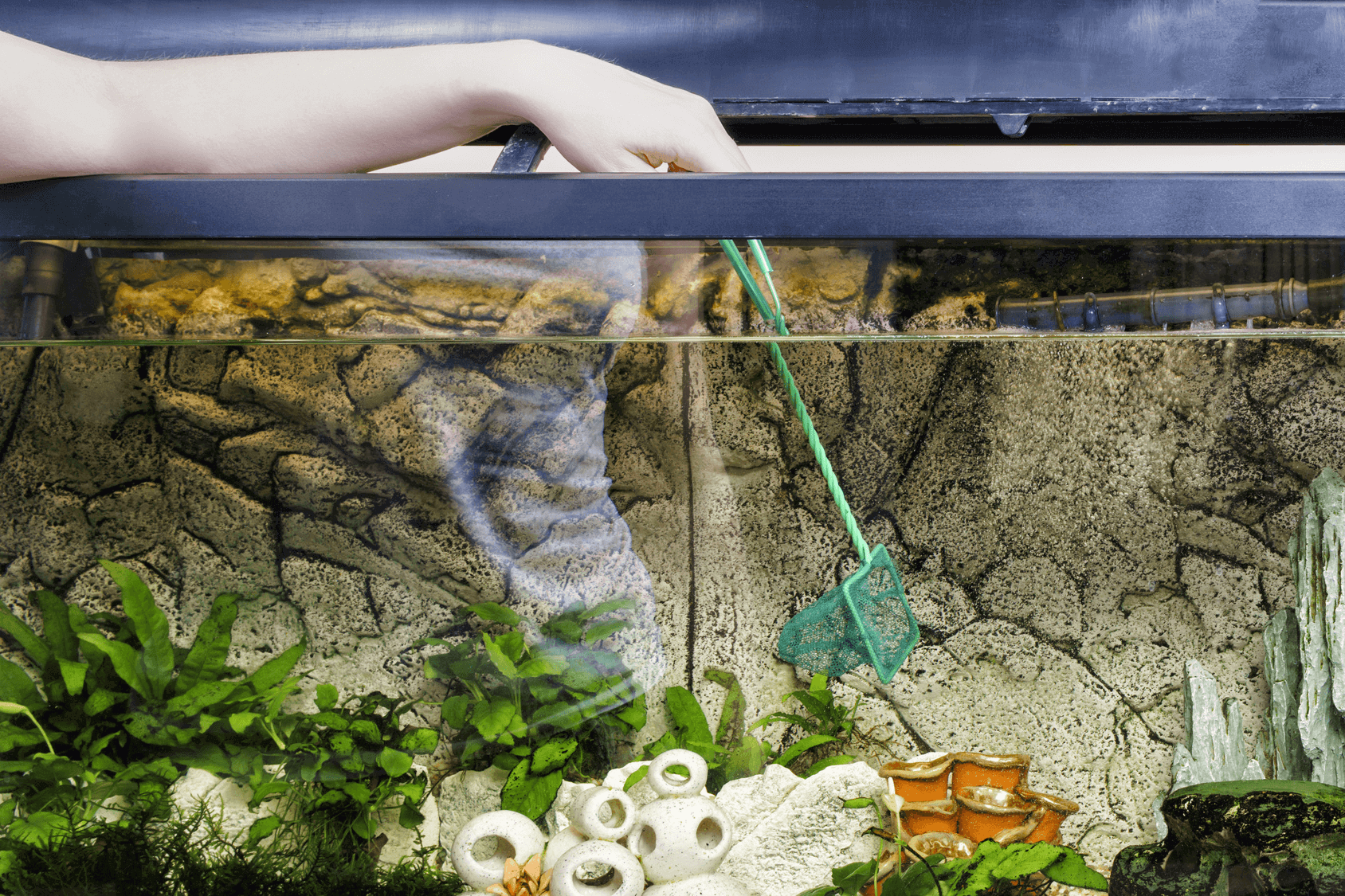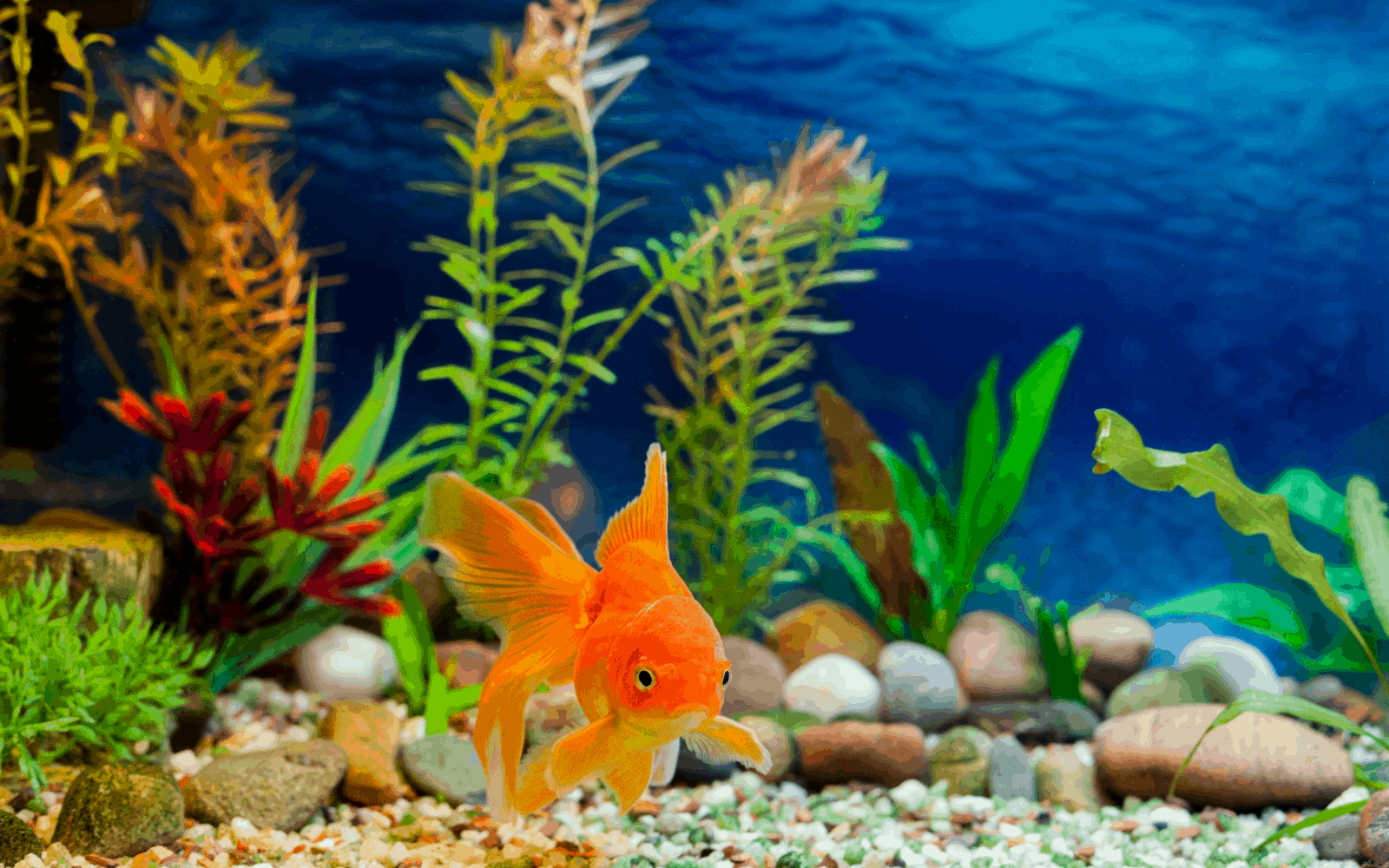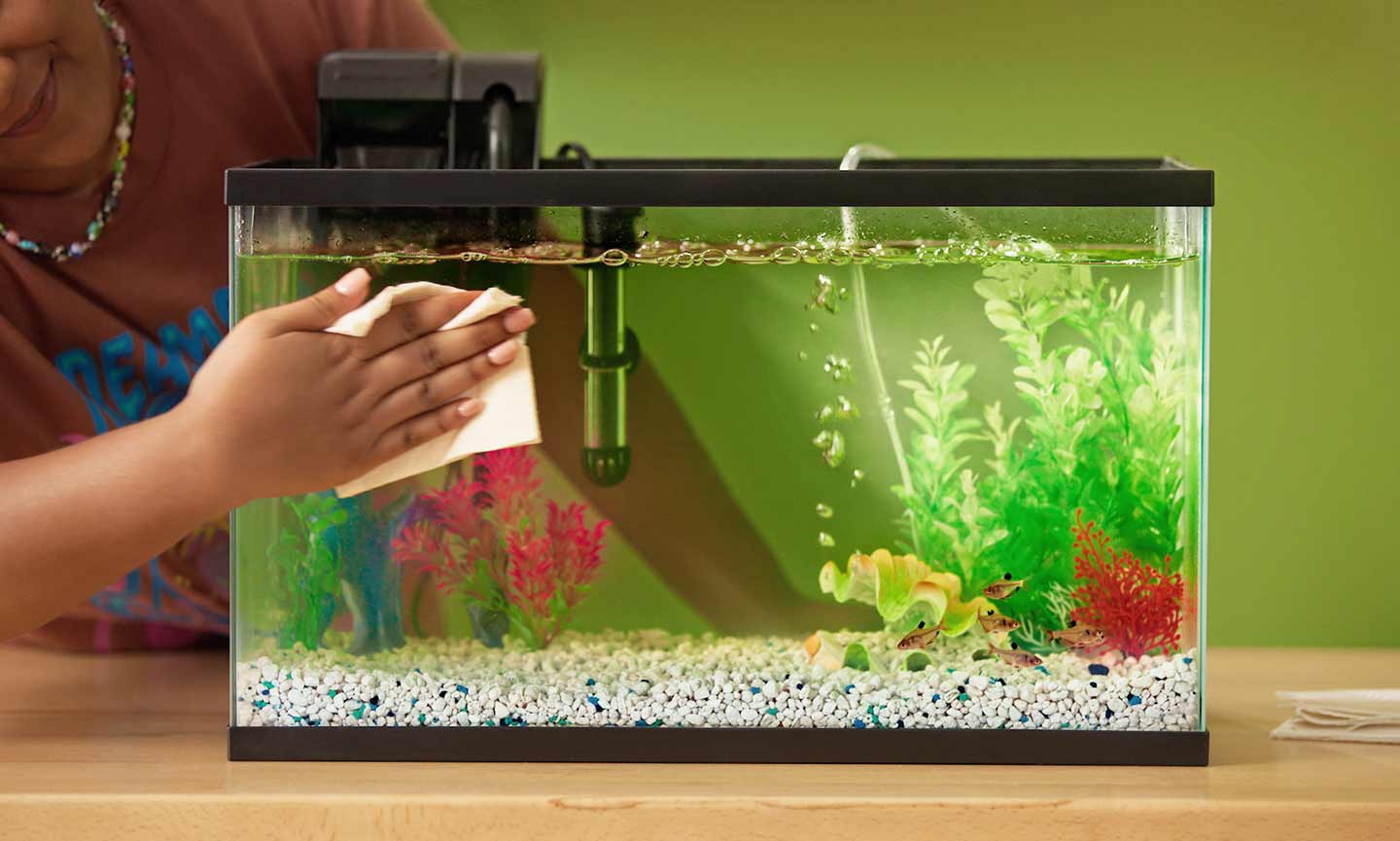Introduction
Maintaining a clean and healthy environment for your aquatic pets is essential for their well-being. Regular cleaning of your fish tank not only enhances the visual appeal of your aquarium but also promotes the overall health of your fish and other aquatic inhabitants. In this comprehensive guide, we will walk you through the step-by-step process of cleaning a fish tank, providing valuable insights and practical tips for aquarium owners.

Gathering the Necessary Supplies
Before initiating the cleaning process, it’s crucial to gather all the necessary supplies. You will need a reliable algae scraper or pad, a siphon vacuum, a bucket designated for aquarium use, clean sponges or rags, and a water testing kit. Additionally, have a new supply of dechlorinated water ready for the tank, as you’ll need to replace a portion of the existing water during the cleaning process. Ensure that all the equipment is specifically designated for aquarium use to prevent the introduction of contaminants.
Preparing Your Fish
It’s important to consider the well-being of your fish before starting the cleaning process. If feasible, it’s advisable to transfer your fish to a separate holding tank or container with some of the existing tank water. This ensures that the fish remain safe and undisturbed while you clean their habitat. If moving them is not an option, be mindful of their presence during the cleaning process, and take care not to stress or harm them.

Cleaning the Glass and Decorations
Begin by using an algae scraper or pad to remove any algae buildup on the glass surfaces of the aquarium. Take care to use gentle, sweeping motions to avoid scratching the glass. For decorations such as rocks, artificial plants, or driftwood, use a soft brush or sponge to gently remove any accumulated debris or algae. Rinse the decorations thoroughly in dechlorinated water before returning them to the tank.
Vacuuming the Substrate
Using a siphon vacuum, carefully vacuum the substrate at the bottom of the tank to remove leftover food, fish waste, and other debris. Hold the vacuum close to the substrate without disturbing it excessively, allowing the debris to be drawn up without disrupting the balance of the tank. Focus on areas with visible waste accumulation, and perform a partial water change if necessary to maintain water quality.
Performing Water Tests
After cleaning the tank and replacing a portion of the water, use a water testing kit to assess the water parameters. Check for levels of ammonia, nitrites, nitrates, pH, and other key indicators of water quality. This step is essential for ensuring that the tank provides a suitable and healthy environment for your fish. If any parameters are outside of the recommended range, take appropriate corrective measures to restore the balance.

Refilling the Tank
When refilling the tank with dechlorinated water, it’s important to match the water temperature as closely as possible to the existing tank water. Sudden temperature changes can stress or harm your fish. Use a thermometer to monitor the water temperature and make adjustments as needed. Slowly add the water to the tank, taking care to avoid disturbing the substrate and decorations.
Monitoring and Maintenance
After completing the cleaning process, monitor the tank closely over the next few days to ensure that the water parameters remain stable and within the recommended ranges. Keep an eye on your fish to observe any changes in behavior, which could indicate stress or discomfort. Regular maintenance, including water testing, partial water changes, and routine cleaning, is essential for the long-term health and vitality of your aquarium.
Choosing the Right Cleaning Schedule
Determining the appropriate cleaning schedule for your fish tank depends on several factors, including the size of the tank, the number and type of fish, and the presence of live plants. Generally, a weekly or bi-weekly cleaning routine is recommended for most aquariums. Smaller tanks may require more frequent attention due to their limited water volume, which can lead to faster accumulation of waste and debris. Conversely, larger tanks with efficient filtration systems may sustain longer intervals between cleanings. By observing your aquarium and its inhabitants, you can establish a cleaning schedule that effectively maintains water quality and minimizes stress for your aquatic pets.

Handling Aquarium Plants
If your aquarium contains live plants, special care must be taken during the cleaning process to ensure their health and growth. Live plants contribute to the overall balance of the tank by absorbing nitrates and providing oxygen. When cleaning, gently remove any dead or decaying plant matter to prevent it from decomposing and affecting water quality. It’s also essential to avoid disturbing the roots of the plants. If necessary, trim overgrown areas to promote healthy growth and maintain an aesthetically pleasing environment. Regularly check for signs of algae growth on plants and gently clean them if needed, taking care not to damage delicate leaves.
Maintaining Filtration Systems
Filtration systems play a critical role in maintaining water quality by removing contaminants and providing biological filtration. During the cleaning process, it’s important to check and maintain your filter to ensure optimal performance. Rinse the filter media in dechlorinated water to remove accumulated debris without killing beneficial bacteria. Avoid using tap water, as chlorine can harm these beneficial organisms. Depending on the type of filter, replace or clean the filter media according to the manufacturer’s recommendations. A well-maintained filter will help keep the water clear and support the overall health of your aquarium ecosystem.
Dealing with Algae Blooms
Algae blooms are a common challenge for aquarium owners, often resulting from excessive nutrients, inadequate lighting, or poor water circulation. To manage algae growth, ensure that your tank is not exposed to direct sunlight, as this can exacerbate the problem. Adjust the lighting schedule to mimic natural daylight cycles and avoid overfeeding your fish, which can increase nutrient levels in the water. Regular water changes and proper filtration can help control algae growth. If an algae bloom does occur, use algae scrapers or pads to remove it from glass surfaces and decorations, and consider introducing algae-eating fish or invertebrates as natural solutions.

Conclusion
Regular cleaning and maintenance are fundamental aspects of responsible aquarium ownership. By following this step-by-step guide, you can ensure that your fish tank remains a clean, healthy, and vibrant ecosystem for your aquatic companions. Remember to prioritize the well-being of your fish throughout the cleaning process, and seek guidance from experienced aquarists or professionals if you encounter any challenges. With proper care and attention, your fish tank will continue to thrive as a captivating centerpiece in your home.










